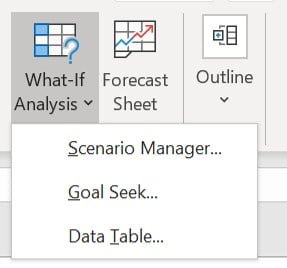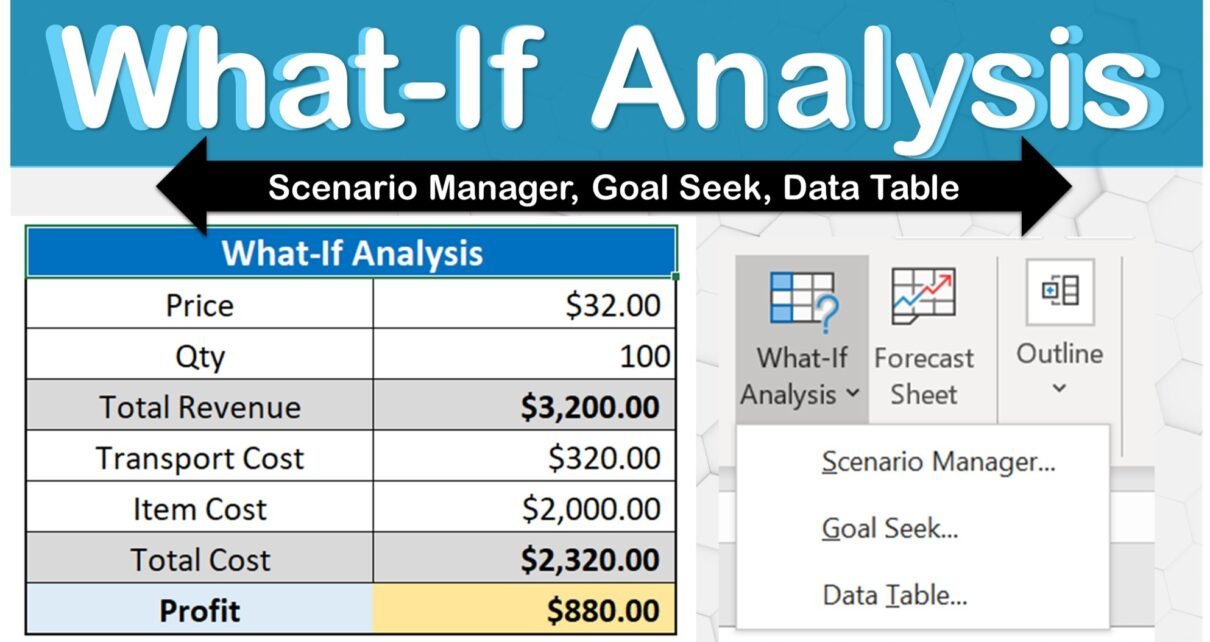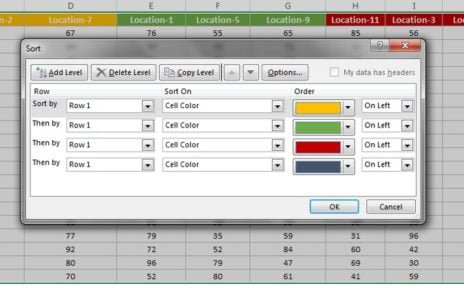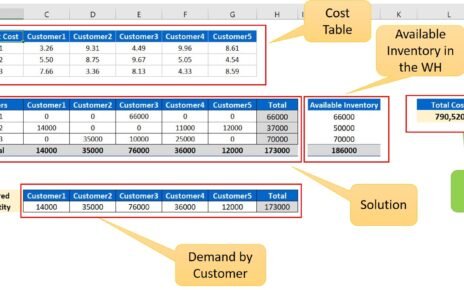In this article, we you will learn about What-If Analysis in Microsoft Excel. You can use several different sets of values in one or more formulas to explore all the various results.
What is What-If Analysis in Microsoft Excel?
It is a feature in Excel for Data Analysis and optimization. You to experiment with different sets of values in your formulas to see how they impact your results. Thats means now you can explore a range of outcomes without changing your actual data. It will help to making it perfect for forecasting, budgeting, and more.

Now, you might be thinking, “That sounds complicated!” But don’t worry—it’s easier than you might expect. In Microsoft Excel there are, three main tools within What-If Analysis: Scenario Manager, Goal Seek, and Data Table. Each one is designed to help you in different ways, and we’ll walk through them step by step.
Scenario Manager
Let’s start with Scenario Manager. Imagine you’re planning a budget, and you want to see what happens if your expenses go up or down. Instead of manually changing the numbers over and over, you can use Scenario Manager to create different scenarios—like “Best Case,” “Worst Case,” or “Average Case.” This feature can help you to save and switch between these scenarios quickly, so you can easily compare them.
How to Use Scenario Manager:
- Below are the steps to use the Scenario Manager in Excel-
- Go to the Data tab on the Excel Ribbon.
- Click on What-If Analysis and choose Scenario Manager.
- You’ll be able to create different scenarios by selecting the cells you want to change and entering the various values for each scenario.
- Finally, you can flip between these scenarios to see how your data changes, helping you make informed decisions with ease.
Goal Seek: Find the Perfect Number
Next up is Goal Seek, which is like having a GPS for your data. Imagine you know where you want to go—a specific result you need—but you’re not sure how to get there. Goal Seek lets you work backward to find the exact number you need to reach your target.
For example, let’s say you’re trying to figure out the price you should set for a product to hit a specific profit goal. Instead of guessing and checking, you can just use Goal Seek to do this. Just input your target profit. It will tell you what price you need to charge.
How to Use Goal Seek:
Below are the steps to use the Goal Seek in Excel-
- Start by going to the Data tab on the Excel Ribbon.
- Next, click on What-If Analysis and select Goal Seek.
- Then, choose the cell with the result you want to change, set your target value, and tell Excel which cell to adjust to reach that target.
- With just a click, Goal Seek will calculate the number you need, saving you time and effort.
Data Table: See All the Outcomes at Once
Finally, let’s talk about Data Table, the tool that allows you to see how different values affect your results, all in one place. If you’re curious about how changing one or two variables could change everything, Data Table lets you compare all these possibilities side by side.
For instance, if you’re looking at how different interest rates might impact your loan repayments, a Data Table can show you all the scenarios at a glance. It’s like having a crystal ball for your data!
How to Use Data Table:
Below are the steps to use the Data Table in Excel-
- Begin by going to the Data tab on the Excel Ribbon.
- Then, click on What-If Analysis and choose Data Table.
- From there, select the row and column input cells for the values you want to test.
- Excel will fill out the table with results, allowing you to quickly compare different scenarios without breaking a sweat.
Why Should You Use What-If Analysis?
It gives you the power to explore different scenarios without messing up your original data. This means you can make smarter, data-driven decisions with confidence. Whether you’re managing a business, planning a project, or just organizing your personal finances, these tools can help you get the most out of your data.
Key Points to Remember:
- Scenario Manager lets you easily switch between different outcomes by creating and saving multiple scenarios.
- Goal Seek helps you figure out the exact number you need to reach a specific goal.
- Using the Data tables, you can compare the different values with your results in table format.
Now that you know how to use What-If Analysis, why not give it a try in your next Excel project? It can make your work more easier.
Visit our YouTube channel to learn step-by-step video tutorials



